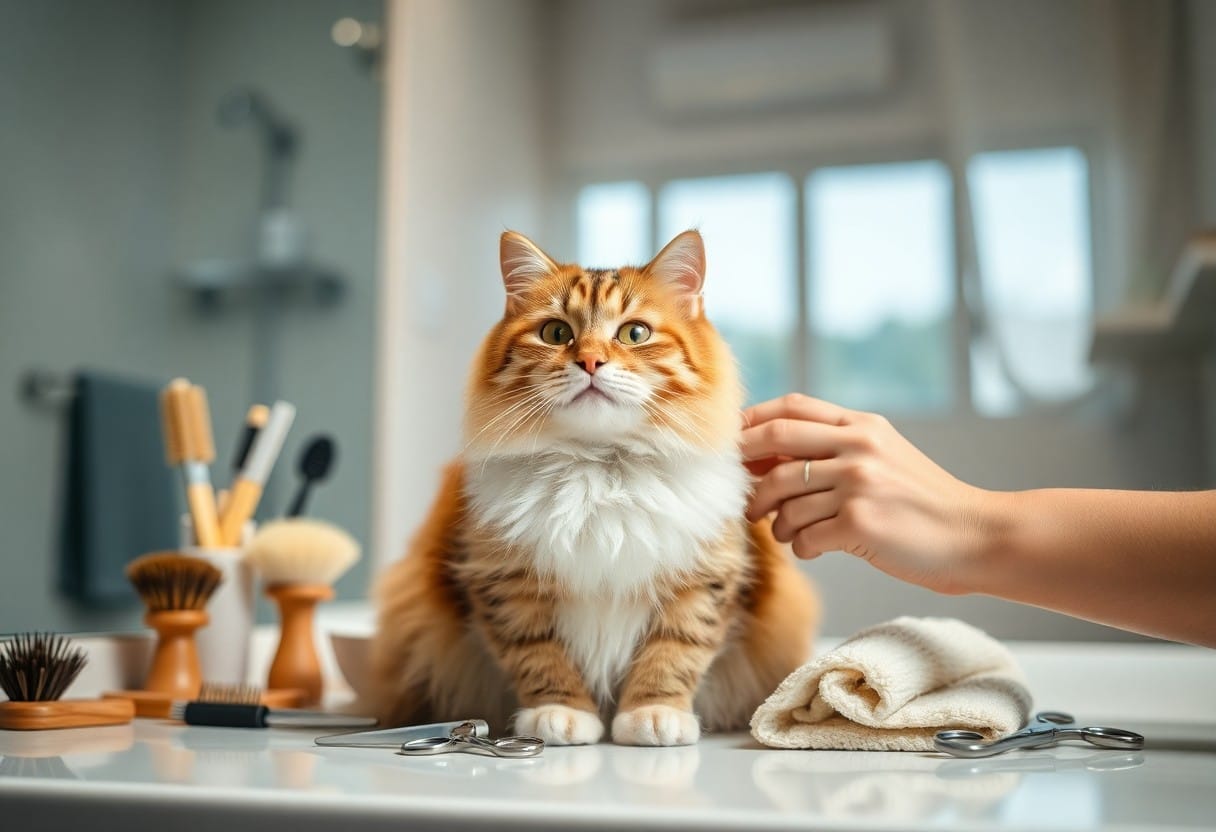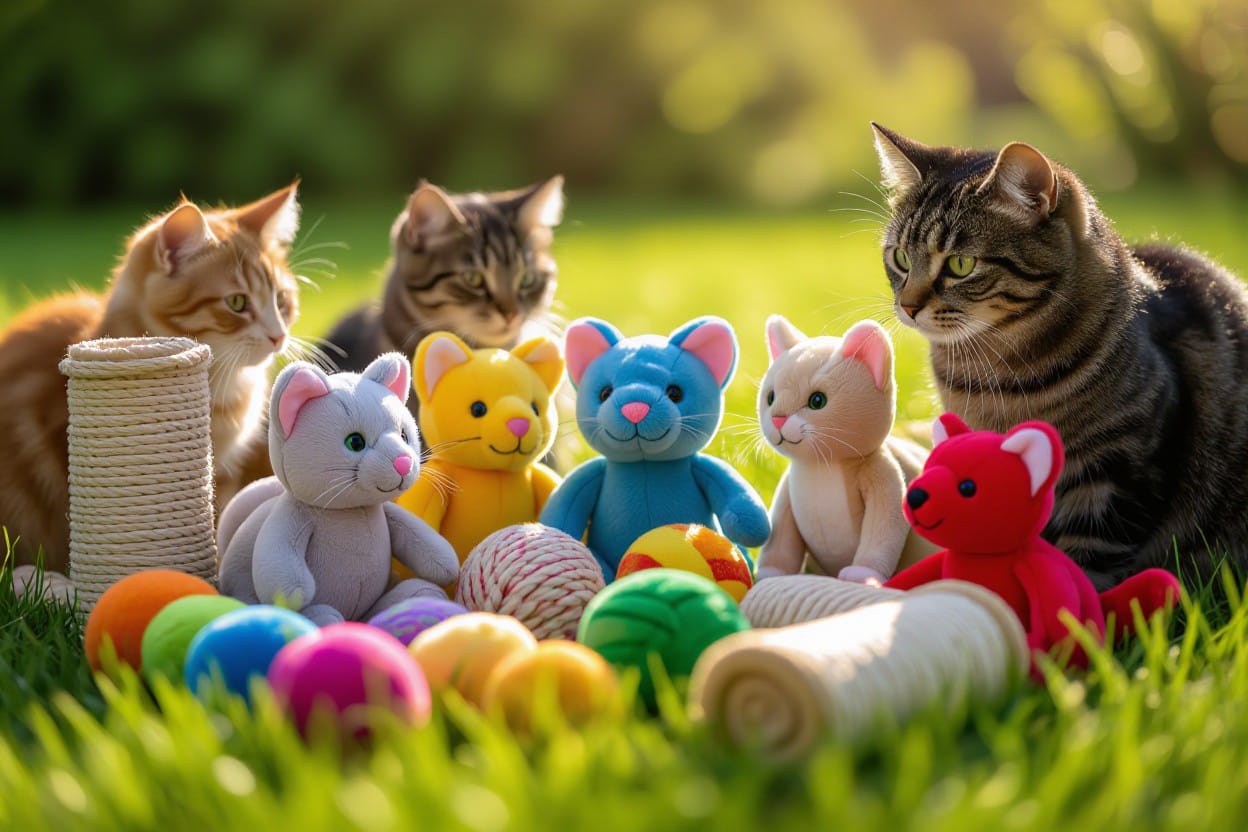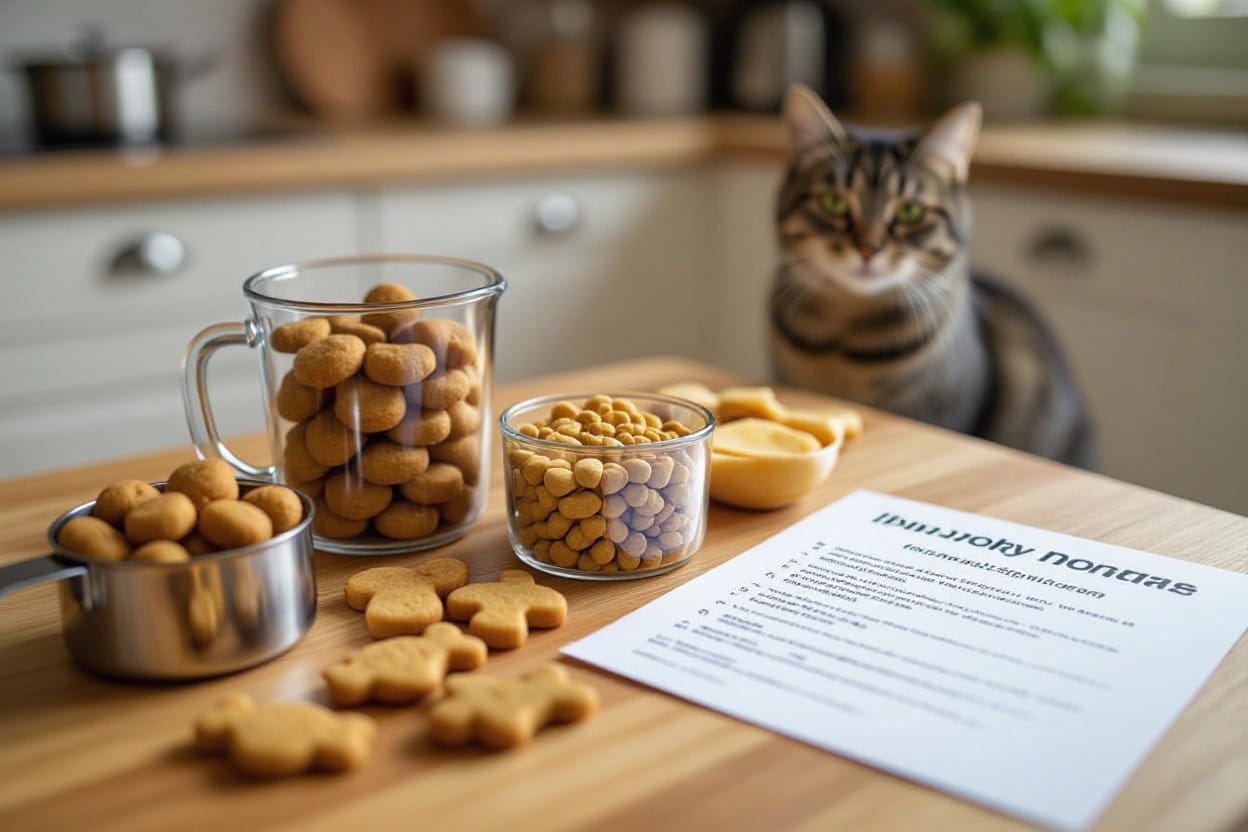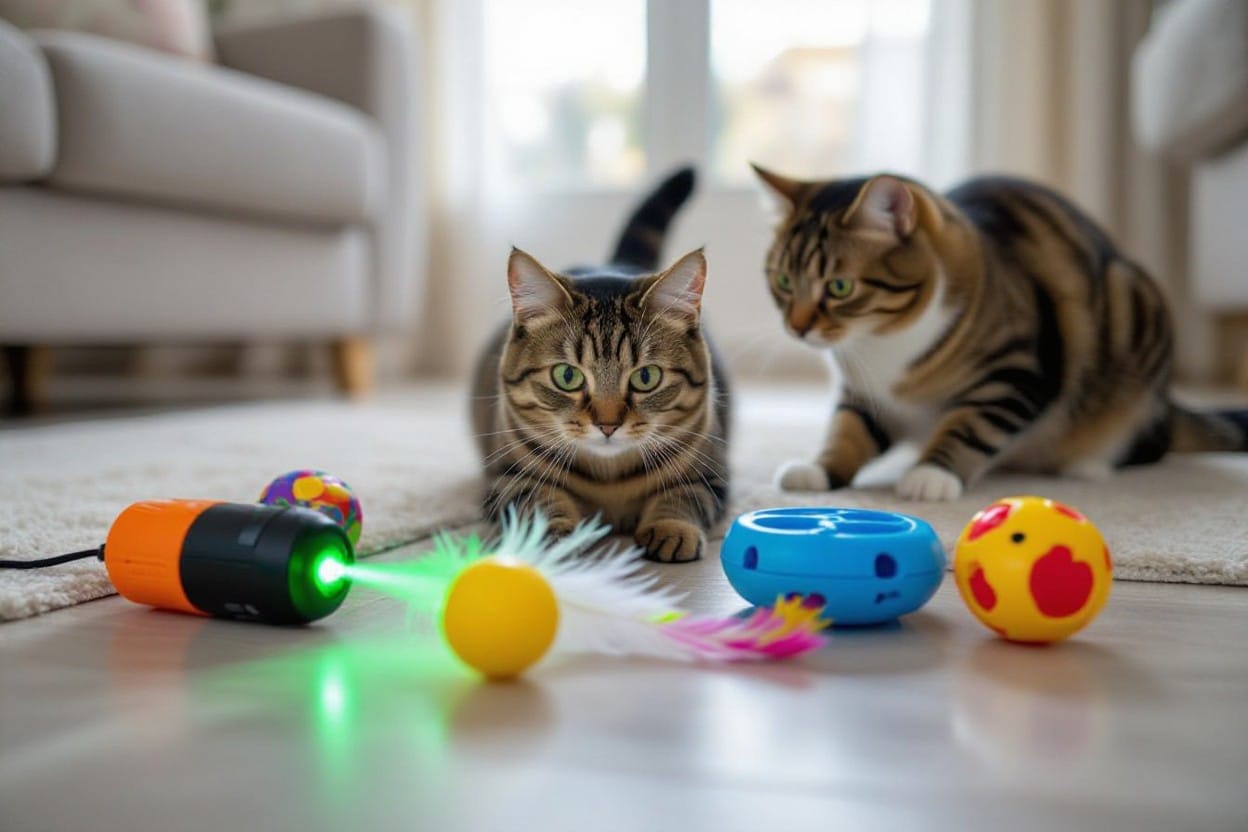Most cat owners know that grooming is necessary for your feline friend’s health, but it can be a time-consuming task. With the right steps, you can streamline your grooming routine, ensuring that your cat remains clean and happy without sacrificing too much of your day. This guide will provide you with ten efficient tips to help you achieve effective cat grooming at home, keeping your companion’s coat in top condition and reducing shedding and hairballs. Let’s examine these practical suggestions to make grooming a breeze!
Key Takeaways:
- Establish a regular grooming routine to maintain your cat’s coat and reduce shedding, which can save time in the long run.
- Invest in quality grooming tools suited for your cat’s breed and coat type to ensure efficient grooming sessions.
- Introduce gradual desensitization to grooming by allowing your cat to explore tools and getting them used to the process, making the experience smoother for both of you.


Choose the Right Tools
Acquiring the right grooming tools is imperative for effective cat grooming at home. By selecting high-quality equipment tailored to your kitty’s specific needs, you can make the grooming process smoother and more efficient. Investing in the appropriate tools will not only save you time but also provide your cat with a comfortable and positive grooming experience.
Quality Grooming Brushes
One of the most important tools in your grooming kit is a quality brush, tailored to your cat’s fur type. Whether your feline has short, medium, or long hair, a good brush will help remove loose hair, prevent matting, and reduce shedding. Furthermore, grooming promotes bonding between you and your cat, making it an enjoyable experience for both of you.
Nail Clippers or Grinders
There’s no denying that regular nail care is important for your cat’s overall well-being. Using the right nail clippers or grinders can prevent splintering and ensure that your cat’s nails remain at a safe length. Additionally, these tools help avoid potential injuries to both you and your kitty during play.
Choose nail clippers designed specifically for cats, as they provide a cleaner cut and are less likely to cause your pet discomfort. Opting for a grinder can also be advantageous, as this tool allows you to gradually file down the nail, reducing the risk of cutting into the quick. Whichever option you choose, always take your time to ensure a positive experience, as your cat’s comfort and safety should always come first.
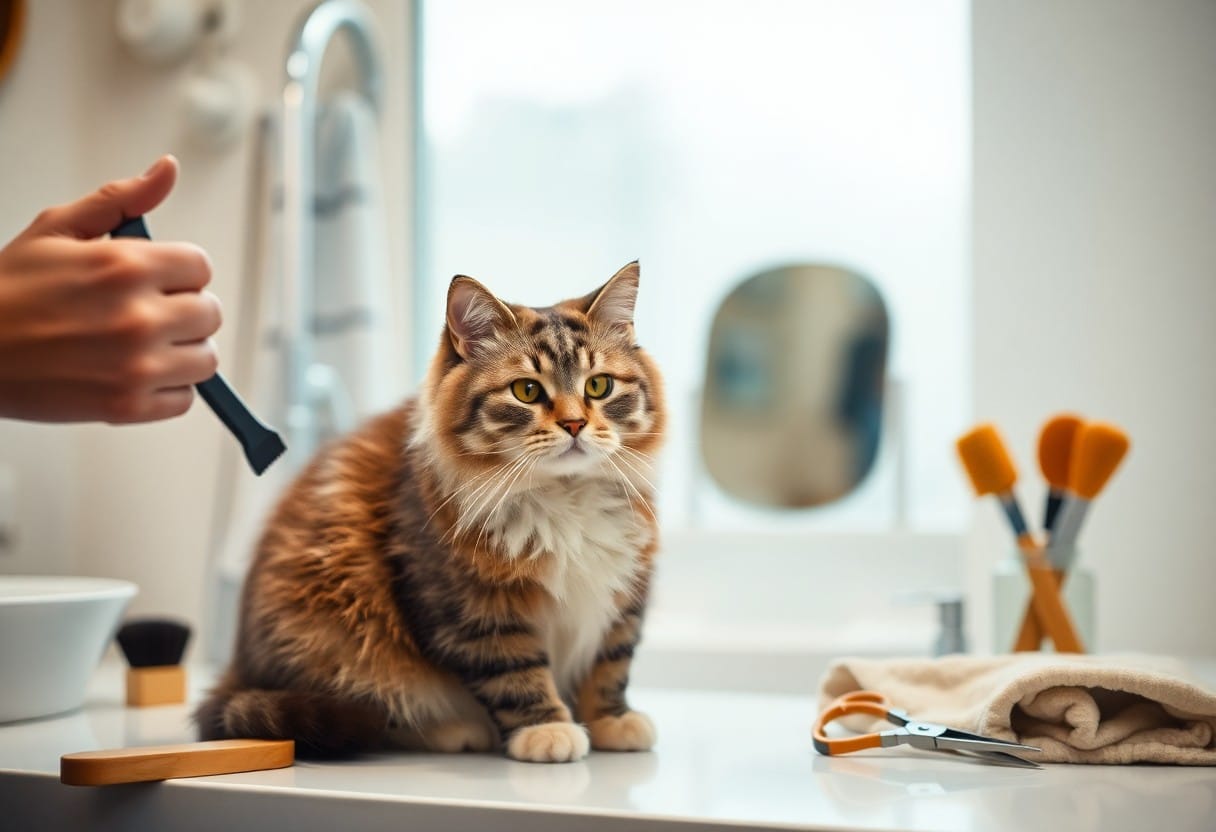
Create a grooming routine
Now that you understand the importance of grooming, establishing a consistent routine will make the process smoother and more enjoyable for both you and your cat. A regular grooming routine helps to reduce shedding, prevent matting, and promote overall skin and coat health. This not only keeps your feline friend looking fabulous but also strengthens the bond between you and your pet. Tailor your grooming sessions to your cat’s needs, considering their breed, age, and coat type.
Schedule regular sessions
Grooming should be a priority in your cat care practices, and scheduling regular sessions is imperative for maintaining your cat’s coat. Set aside a specific day and time each week dedicated to grooming. This consistency allows your cat to acclimate to the process and reduces stress during each session. Whether it’s a quick brushing or a full grooming, regular sessions help to keep your cat’s coat healthy and free from tangles.
Stick to a timetable
You’ll find that sticking to a grooming timetable is effective in establishing a routine. Routine grooming helps you monitor any changes in your cat’s skin or coat, allowing you to catch potential issues early. To achieve this, mark regular grooming days on your calendar and treat these appointments as non-negotiable. You could enhance the experience by incorporating treats or playtime post-grooming, making your sessions more enjoyable. Consistency is key, so commit to your timetable to promote lasting positive habits for both you and your cat.
Start with Brushing
Many cat owners underestimate the importance of brushing. Starting your grooming routine with a thorough brush helps to remove dirt, debris, and loose hair from your cat’s coat. This simple step not only keeps your cat looking great but also prevents hairballs and reduces the amount of fur shed around your home. Make it a regular part of your cat’s care, and you’ll find that the grooming process becomes more manageable and enjoyable for both you and your feline friend.
Remove Loose Fur
For effective grooming, start by removing loose fur, which helps to keep your cat’s coat healthy and shiny. Use a fine-toothed comb or a slicker brush designed for your cat’s coat type. Aim to brush your cat at least once a week to minimize the amount of fur shed throughout your home.
Avoid Matting Issues
An crucial aspect of grooming is to avoid matting issues that can cause discomfort for your cat. Regular brushing not only helps in maintaining a clean coat but also ensures that you can spot any potential tangles before they turn into painful mats.
Matting can lead to irritation and skin problems for your cat, so it’s important to keep an eye out for tangles, especially in long-haired breeds. Regular brushing sessions allow you to gently detangle any knots before they get worse. If you discover any persistent mats, consider using a mat splitter or seek professional help, as trying to remove them forcefully can hurt your pet. Establishing a consistent grooming routine can save you from these issues and keep your cat comfortable.
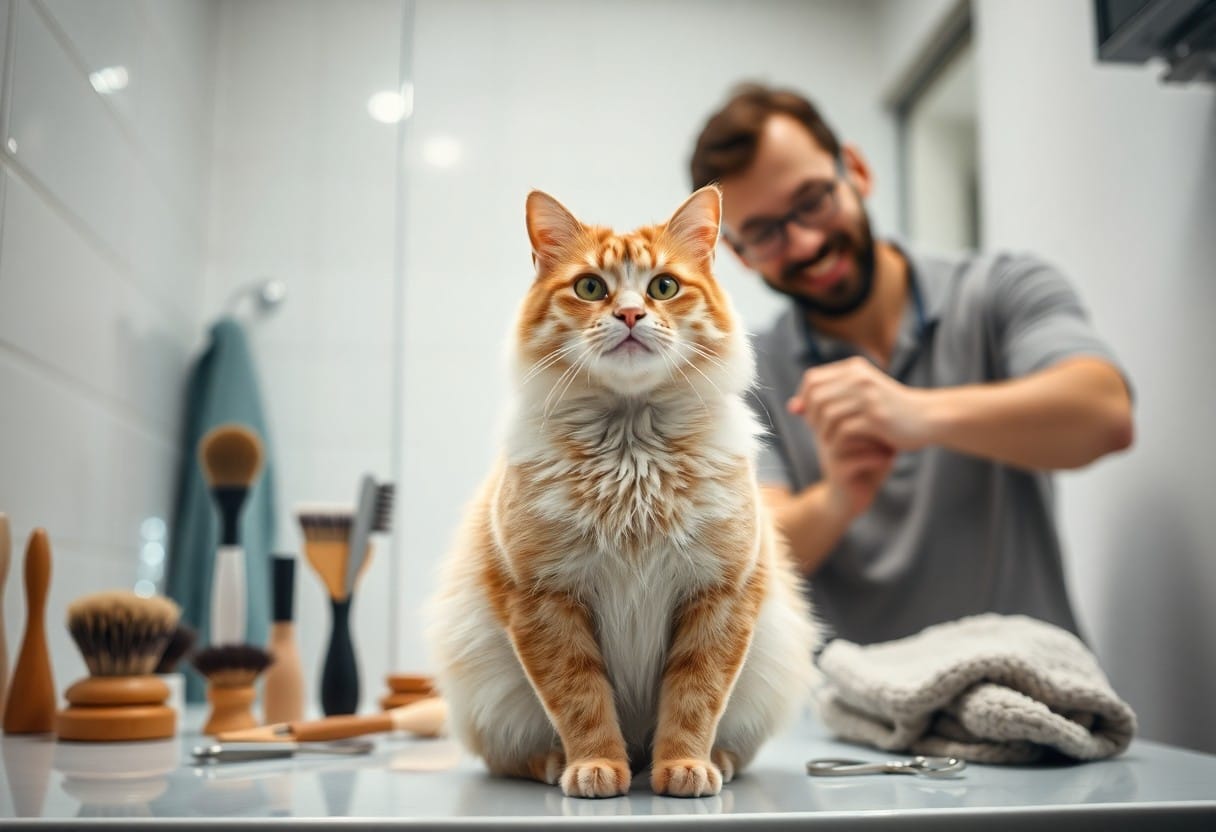
Bathe When Necessary
Unlike dogs, cats generally do a commendable job of grooming themselves. However, there are instances when your feline friend may need a bath, such as if they become particularly dirty or develop a skin condition. When bathing your cat, it’s crucial to evaluate their needs and ensure that you’re not overdoing it, as frequent bathing can strip their fur of natural oils and lead to skin irritation.
Use Cat-Friendly Shampoo
Some shampoos formulated for humans can be harsh on your cat’s skin. Make sure to use a cat-friendly shampoo specifically designed for felines. These products are pH balanced and gentle, ensuring that your cat’s skin and coat remain healthy and free from irritation. Always check the label for ingredients that might be harmful to your pet.
Rinse Thoroughly
Any leftover shampoo can cause skin irritation and discomfort for your cat. It’s vital to rinse your cat thoroughly during bath time to ensure all traces of shampoo are removed. If your cat has long fur, be especially attentive to the undercoat, as residual product may be trapped there. A good rinse prevents any adverse reactions and keeps your cat feeling fresh and clean.
Rinse your cat with warm water, starting from their head and working your way down to their tail. Make sure to thoroughly rinse all areas, paying special attention to the belly and paws, where suds may linger. After rinsing, check to ensure that no shampoo remains, as it could lead to skin irritation or allergies. Ensuring proper rinsing can make all the difference in keeping your cat comfortable and happy following their bath.
Trim Nails Carefully
Your cat’s nails should be trimmed regularly to prevent overgrowth and discomfort. Using specialized cat nail clippers, gently clip the sharp tips of the nails, ensuring not to cut too close to the quick, which can cause pain and bleeding. If your cat is nervous, try to keep the experience calm and positive by creating a suitable environment and taking breaks if needed.
Avoid Quick Bleeding
You’ll want to avoid cutting into the quick, as this area contains blood vessels and nerves. If you accidentally clip too close, it can lead to bleeding and pain. Have styptic powder handy to stop the bleeding quickly, and always remain calm to help soothe your cat during the process.
Manage with Treats
Assuming your cat is a bit finicky, managing the nail trimming process with treats can make all the difference. Positive reinforcement, such as offering small rewards after trimming, helps create a more relaxed environment and can turn grooming into a pleasant experience for both you and your feline.
Manage your cat’s nail trimming by using positive reinforcement techniques like treats. After successfully trimming a nail or two, offer a treat to create a rewarding association with the experience. This approach not only encourages cooperation but also helps to ease your cat’s anxiety. Be patient, and gradually increase the number of nails you trim in one session, reinforcing good behavior consistently. Establishing a routine that includes treats can turn nail trimming into a more enjoyable task for you both.
Clean Ears Gently
Not all cats enjoy having their ears cleaned, but a gentle approach can make the process a little easier and more comfortable for your furry friend. Use a soft cloth or cotton ball to wipe away any dirt or wax that might accumulate, being sure to approach this task with patience. Establishing a calming routine can help your cat feel more at ease during grooming sessions.
Use Cotton Balls
You can utilize cotton balls to safely clean your cat’s ears. Simply moisten a cotton ball with an appropriate ear cleaning solution and gently wipe the visible parts of the ear. This method is less intimidating for your cat and helps to collect debris effectively without causing harm.
Avoid Deep Insertion
Any attempt to clean your cat’s ears should be limited to the outer ear area. Inserting anything deeply into the ear canal can result in injury, infection, or even damage to the eardrum. Your goal is to gently clear wax and dirt from the outer ear, where it gathers. Always keep cleaning efforts focused on what is visible and avoid the temptation to probe deeper.
cotton balls are a safe tool for ear cleaning, but vigilance is crucial. Always steer clear of inserting cotton balls or any implements deep into the ear canal, as this can lead to serious complications. Instead, stick to the outer ear and use cotton balls to remove only what is necessary. This practice will help maintain your cat’s ear hygiene while minimizing the risk of injuries or infections.
Check for pests
All pets deserve a thorough inspection for pests during grooming sessions. Regularly checking your cat for unwanted insects not only keeps them comfortable but also helps prevent a range of potential health issues. By being proactive about pest control, you can ensure your furry friend remains happy and healthy.
Look for fleas
You should closely examine your cat’s fur for signs of fleas, such as tiny black specks that resemble dirt. These pests can cause scratching and discomfort, leading to possible skin infections. Pay special attention to areas like the neck and behind the ears where fleas frequently hide.
Examine for ticks
For a comprehensive grooming routine, checking for ticks is important. Ticks can attach to your cat’s skin and can transmit some serious illnesses. They are often found in warm, sheltered areas of your cat’s body, so a thorough examination is vital.
Examine your cat’s skin and fur carefully, focusing on areas such as the armpits, between the toes, and around the ears. Remove any ticks immediately using fine-tipped tweezers, grasping the tick as close to the skin as possible without squeezing. Be cautious as ticks can carry diseases like Lyme disease. If you’re unsure about removal, or if you see any signs of infection, don’t hesitate to contact your veterinarian for assistance. Regular checks will help ensure your cat remains healthy and pest-free.
Tooth Care Matters
Keep your cat’s teeth healthy by incorporating regular dental care into their grooming routine. Failing to address dental hygiene can lead to serious issues such as gum disease and bad breath. You can effectively reduce plaque buildup and ensure your feline friend maintains a radiant smile with just a few simple steps.
Use Cat Toothbrush
On your journey to better dental hygiene for your cat, using a cat toothbrush tailored to their unique mouth shape is important. This specialized design allows you to reach all those hard-to-clean areas, ensuring a more effective brushing experience. Aim to brush your cat’s teeth at least a few times a week to promote optimal oral health.
Offer Dental Treats
On top of brushing, integrating dental treats into your cat’s diet can significantly enhance their oral health. These treats not only help in reducing plaque buildup but also keep your cat engaged and satisfied during their grooming routine.
Treats that are specifically formulated for dental care are designed to reduce tartar and plaque through their unique textures and ingredients. Ensure you select treats that are vet-approved and suitable for your cat’s size and dietary needs. Additionally, offering these delicious rewards can make grooming more enjoyable for your cat, transforming it into a positive bonding experience rather than a chore. Just be cautious to not overindulge; too many treats can lead to weight gain and other health issues. Balance is key!
Reward Your Cat
Once again, rewarding your cat during grooming sessions can significantly improve their experience and cooperation. Positive reinforcement encourages your feline friend to associate grooming with pleasant outcomes, making it easier for you to manage their grooming needs at home. Use treats, petting, or verbal praise to create a positive environment and help your cat feel more comfortable during the process.
Use Positive Reinforcement
Clearly, positive reinforcement is key to building a trusting relationship with your cat during grooming. Each time your cat displays calm behavior or allows you to groom them, offer a small treat or gentle praise. This will help them understand that grooming can lead to enjoyable experiences, encouraging them to remain relaxed next time.
Don’t Rush the Process
Some cats require more time to adjust to the grooming routine than others, so patience is important for success. Rushing can create a stressful environment, making your cat anxious and resistive. Take your time and allow your pet to become accustomed to the grooming tools and sensations.
A chaotic environment, combined with the pressure to finish quickly, can lead to a negative grooming experience for both you and your cat. Go slowly, letting your cat explore the grooming tools, and approach each grooming session with a calm demeanor. By allowing your cat to acclimate, you’ll promote a positive grooming experience that encourages trust and cooperation, resulting in less anxiety for both of you in the long run.
Summing up
So, incorporating these top 10 time-saving steps into your cat grooming routine can transform the experience for both you and your furry friend. By staying organized, using the right tools, and establishing a consistent schedule, you can ensure that grooming becomes a quick and enjoyable part of your cat care regimen. Prioritize your cat’s comfort and well-being, and you’ll not only save time but also enhance your bond with your pet while maintaining their coat and overall health.
FAQ
Q: What are the important tools needed for effective cat grooming at home?
A: To groom your cat effectively at home, you will need a few key tools. Firstly, a high-quality brush or comb tailored to your cat’s fur type is important. For short-haired cats, a slicker brush works well, while long-haired cats may need a wide-toothed comb. Additionally, a nail trimmer designed for cats is helpful for keeping their claws neat. You may also want to have grooming wipes or a damp cloth for cleaning dirt or debris from their fur, and cat-safe shampoo for occasional baths. Having these tools ready will make the grooming process smoother and more efficient.
Q: How often should I groom my cat to maintain their coat health?
A: The frequency of grooming depends on your cat’s breed and coat type. Generally, short-haired cats benefit from weekly grooming sessions to remove loose hair and prevent matting. Long-haired cats, on the other hand, require more frequent grooming, ideally every few days, to avoid tangles and hairballs. Regular grooming not only keeps your cat’s coat healthy but also helps in monitoring their skin condition and overall well-being. Adjust the frequency as needed, especially if your cat is shedding more than usual or shows signs of matting.
Q: What techniques can I use to make grooming my cat less stressful for both of us?
A: To reduce stress during grooming, it helps to establish a calming environment and create a positive experience. Start grooming your cat in a quiet space away from distractions. Use treats and gentle praise to reward them for their cooperation. Gradually introduce grooming tools, letting your cat sniff and explore them before use. Begin with short grooming sessions, increasing the duration as your cat becomes more accustomed to the process. If your cat shows signs of anxiety or discomfort, take breaks and try again later. Consistency and patience will build trust and make grooming a more pleasant experience for both you and your feline friend.
